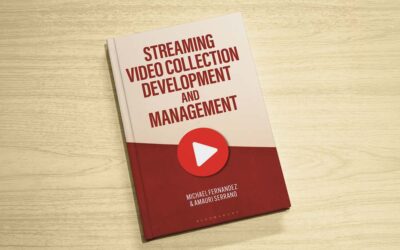Part Two: Special Libraries’ Evolving Role—Continued Success Requires a Business Strategy
Phil Green
The modern special library came into being during the late 19th–early 20th century. The drivers for this emergence were the lack of relevant materials in public or general library collections, combined with the recognition that knowledge and content were a “weapon of business1.” In large companies and with strong leadership, the library became the “central source of information, drawn not only from the technical literature, but also from the company’s own records and reports and from outside sources2.”
Let’s play Monopoly
So, special libraries were established to fill the information void and provide access to relevant materials so that corporate leaders could make better decisions—because that information was simply not available or required enormous effort to find, assemble, and organize. In business strategy terms, the special library was in essence a local content monopoly, since users had nowhere else to turn for specific and technical business content, and commercially available electronic databases required specialized training to use. And for a monopoly, the issues of library sustainability, librarian job security, and career advancement didn’t require a business strategy—they required quality work from well-trained staff.
Competitive threats
Fast forward to the present. Business users no longer live in an information void; they live in an information flood. This flood has come about because of the internet, the saturation of publicly available content, and because of huge growth in both the information industry and electronic publishing aimed at business users—and the resulting disintermediation of the special library. So, the special library, like it or not, now has lots of competition. Remember, even with all the changes, the basic objective of the special library and the needs of the organization remain the same: enable business users to find high quality information quickly. But in today’s highly competitive information environment, the special library (just like any business) needs a business strategy to win—not only hard work.
Don’t try to beat free
According to Michael Porter—in his seminal book Competitive Strategy—in a competitive marketplace, there are three strategies that make sense: cost leadership, differentiation, and focus.
I assert that the internet wins on “cost leadership;” trying to beat free is not an option. So, in my next post, I’ll examine how special libraries can use “differentiation” and “focus” to win in this highly competitive market.
- 1Kruzas, Anthony T. Business and Industrial Libraries in the United States, 1820-1940. New York, Special Libraries Association, 1965
- 2Elin B. Christianson, Special Libraries: Putting Knowledge To Work, University of Illinois, 1976
Similar Posts
Growing Your Leadership Skills: 7 Tips for Special Librarians
Great library leaders aren’t born—they’re made through learning self-reflection and practice. Here are seven strategies to help you grow and lead with impact.
Keeping Up with Copyright and Generative AI: What Special Librarians Need to Know
As generative AI becomes more prevalent copyright law is evolving to address its impact. A new report from the U.S. Copyright Office provides guidance on what is (and isn’t) copyrightable.
Understanding Shadow AI: Risks Costs and Governance
AI can enhance search discovery and efficiency but unsanctioned adoption—known as “shadow AI”—can lead to budget overruns and compliance risks. Here’s how to evaluate AI pricing models and build a governance strategy that balances innovation with cost control.
Interview with an Author: Fernandez on Streaming Video Collection Development
As demand for streaming video in libraries grows so do the challenges of managing access budgets and licensing. Co-author Michael Fernandez shares key insights from his book “Streaming Video Collection Development and Management”.





